Thunderbolt on Windows Part 2: Intel's DZ77RE-K75 & ASUS' P8Z77-V Premium
by Anand Lal Shimpi on June 3, 2012 2:08 AM EST- Posted in
- Motherboards
- CPUs
- Intel
- Asus
- Thunderbolt
- Ivy Bridge
- Chipsets
Performance
In our earlier look at Thunderbolt under Windows I didn't have a working Pegasus driver to really push the limits of the interface's bandwidth. With that now changed, I went to work. I started by pulling out all of the hard drives from the Pegasus R6 and installed four SSDs. I didn't have four identical drives so I threw in a mix of SF-2281 based drives and Vertex 4s. The lowest common capacity was 240GB so the resulting logical RAID-0 drive I built was just under 1TB in size. I then ran a 128KB sequential read test using Iometer to see what sort of performance I could get from the setup:
With this configuration, I achieved a very respectable 922MB/s. Note that the fastest speed I ever attained under OS X was 1000MB/s so we're not all that far off the peak. To try and move the needle a little further I hooked up the SSD based LaCie Little Big Disk and performed a 128KB sequential read across both the LBD and the SSD equipped Pegasus:
Performance moved up a bit to 933MB/s but it's clear that we should've seen a bigger increase in performance from adding another two SSDs to the chain. The fact that performance didn't go up tells me that we're reaching the limits of the interface.
As a last ditch effort I added two more SSDs to the Pegasus R6 chassis, a pair of 128GB Samsung SSD 830s in RAID-0. I repeated the 128KB sequential read test, but now across all four drive targets (2 in the LBD, and 2 RAID arrays in the Pegasus R6):
Unfortunately, performance didn't change. It's safe to say that on a single Thunderbolt port you can get just under 7.5Gbps of bandwidth, in one direction, to a chain of devices. Each Thunderbolt port should have two channels however; the second should allow DisplayPort traffic to be carried without impacting performance. To test this theory I repeated the test but with Apple's Thunderbolt Display in the chain. To drive the 27-inch 2560 x 1440 panel at 60Hz you need around 7Gbps of bandwidth (more if you take into account overhead). With the display connected I repeated the transfer test:
Performance actually went up by a few MB/s, but basically remained unchanged from the earlier 7.5Gbps peak. While I never was able to hit the 8Gbps I got under OS X, that was with the very first iteration of Thunderbolt support under OS X as well as from Promise. It's entirely possible that further tuning/firmware updates have limited performance a bit since then. Either way, it's safe to say that Thunderbolt under Windows is capable of the same class of performance we've seen under OS X.
Pushing video out to the display while pulling in data from external storage devices is actually the best case scenario for Thunderbolt, but what happens if we're sending traffic out on both channels? I conducted the same test with the Thunderbolt Display attached but this time I ran a 128KB sequential write to the attached SSDs:
There's a bit of a performance drop (~6.9Gbps vs. 7.5Gbps) but it's unclear whether this is due to lower SSD write speeds or upstream bandwidth limitations for a single Thunderbolt port.
Final Words
Armed with the right drivers, Promise's Pegasus helped prove that Thunderbolt can be nearly as fast under Windows as it is under OS X. Similar to what we saw under OS X, around 7.5Gbps isn't tough to achieve over a single Thunderbolt port. There's also no significant performance impact seen when driving DisplayPort over the same interface.
The first Thunderbolt equipped motherboards are expensive, but that's mostly a function of Thunderbolt being paired with the absolute highest end models. Over time, I'd expect more ubiquitous deployment of the interface—although it's not clear how long that would take.
Intel's certification program for Thunderbolt on Windows definitely improves the behavior of devices and generally makes the interface OS agnostic. Unfortunately, the reliance on the certification program for proper functionality under Windows means the interface will get off to a rough start on its new platform. As of today, there are no publicly available certified Windows drivers for Thunderbolt devices. This will change, hopefully over the course of the next quarter, but we still need to play a bit of the waiting game.
We also need more Thunderbolt devices. Apple's Thunderbolt Display is a great example of what you can do with Thunderbolt, but without official Windows support we're left waiting again.
Despite the teething problems, I am glad to see Thunderbolt finally arrive on Windows PCs. While there's an obvious fit for mobile, I do believe that even desktop users can benefit from Thunderbolt. At the bare minimum, it can simplify external cable management with only a single cable carrying Ethernet, audio, USB, DisplayPort, etc... from your PC to your Thunderbolt hub and/or display. The fact that it can also move high performance storage out of your chassis might also enable smaller/more interesting desktop form factors. There's an obvious fit with all-in-one designs but even things like mini-ITX become a lot more flexible with Thunderbolt.


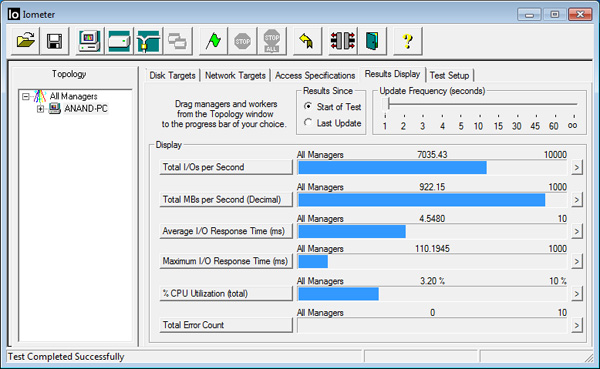
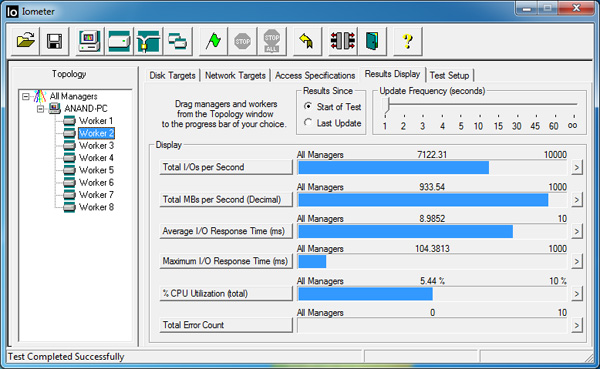
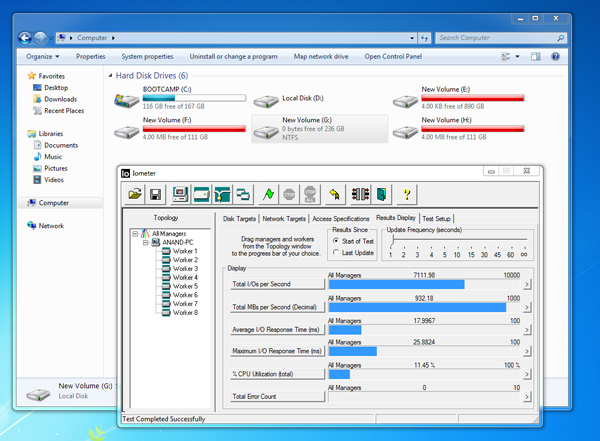
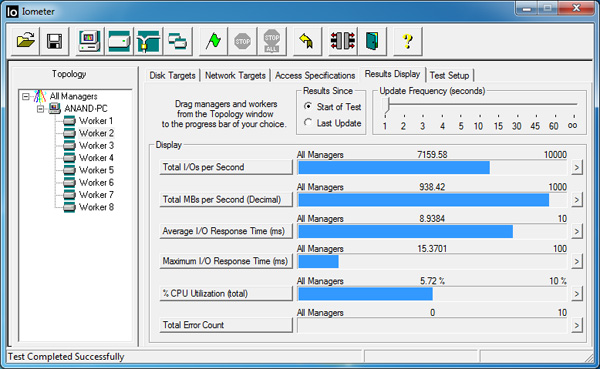
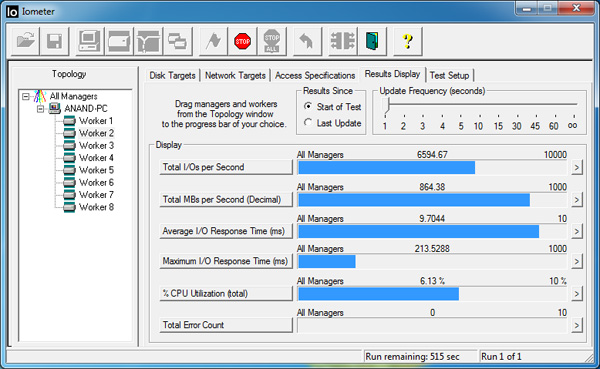
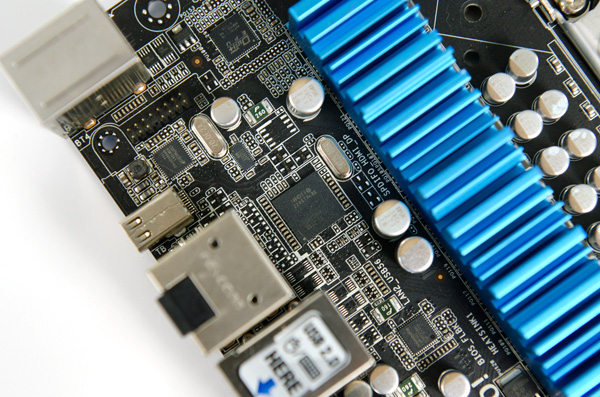
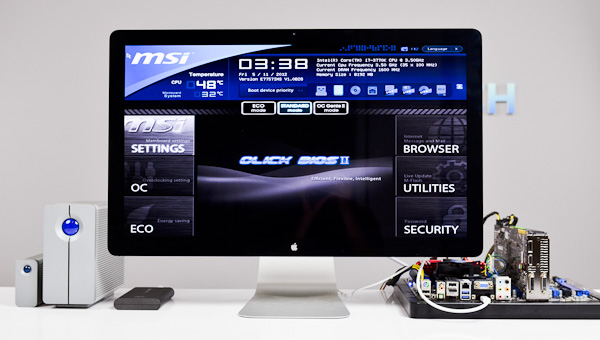
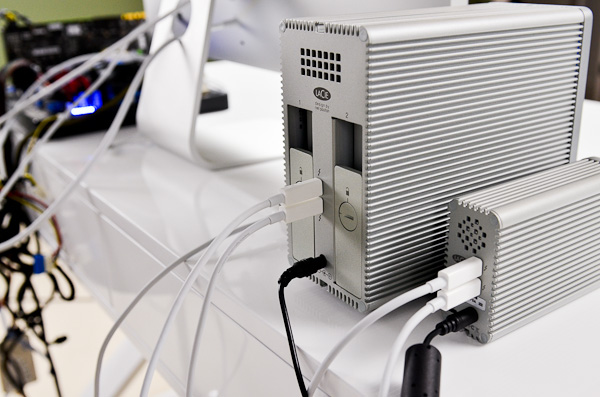








116 Comments
View All Comments
CeriseCogburn - Monday, June 4, 2012 - link
Too bad it wasn't nVidia doing it, you'd have a horde of raging, angry amd fans on your bandwagon 100%. It seems to me the APPL factor has reduced that quantity significantly, as in the I'm and mine is better than you and yours scenario, so "embracing" is in order.Exodite - Sunday, June 3, 2012 - link
Beta was superior to VHS, as was Firewire to the original USB specs.Yet it's clear which are footnotes in history and which were actively used.
The problem isn't TB's technical merits, those are solid enough, but rather the implementation.
What use is it for the general consumer?
And what possible point is there in being backwards compatible with mini-DP, which is at best a fringe standard in its own right?
Maybe TB will take off but I fear it's going to be the next Firewire, mostly due to implementation issues.
KPOM - Sunday, June 3, 2012 - link
The use of mDP was necessitated because the USB Foundation did not permit Intel to route Thunderbolt through a USB port (though Sony did it anyway). Apple then offered up the mDP.I see Thunderbolt having a better chance of becoming popular on notebooks. It can become a universal docking port for devices such as the Apple Thunderbolt Display and PC equivalents. Particularly since Intel is pushing Ultrabooks, we may see more people using an Ultrabook plus external monitor as their "desktop" and a tablet for travel. It's better than today's solution where every manufacturer has a proprietary dock that sometimes doesn't even work across notebook lines within the same manufacturer.
TB will never be as popular as USB 3.0, but it doesn't need to be. With USB 3.0 and TB, no other ports are really necessary. USB 3.0 can handle all the peripherals and even external storage, while TB can handle the display, external GPUs, and high speed networking.
jleach1 - Sunday, June 3, 2012 - link
I see less of an advantage for TB in the workstation place. While its merits will bring it the most significant impact in this area, I see it truly earning it's chops and recognizability in the CE space....specifically, in docking solutions that will allow a new wave of innovation in the mobile market. Ubuntu is already coming to android. Imagine having the ability to drive a high-er Res display from your phone, while powering the device and providing peripheral support through a single cable. Think web top on steroids.An android phone with a quad core 2.0 ghz processor, popped into a docking station that provides bandwidth for an external gpu, to drive a display and sound, and more than enough networking bandwidth.
derektrotter - Monday, June 4, 2012 - link
The Thunderbolt chipsets are taking 5W (as mentioned in the articles)!Your phone would overheat and/or flatten its battery in no time.
Thunderbolt is a poor match for handheld devices, at least right now.
dagamer34 - Sunday, June 3, 2012 - link
The BEST a regular consumer might hope for is a dock with USB 3.0, Firewire 800, eSATA, HDMI out, and a multi-card reader. Anything above that is purely professional stuff, meaning the chances of it being adopted on a broad level of consumer devices is almost nil.KPOM - Sunday, June 3, 2012 - link
Thunderbolt has more than enough bandwidth to handle such an adapter with ease. That's almost what the Apple Thunderbolt Display is (except it has mDP instead of HDMI and USB 2.0 instead of 3.0 - I wouldn't be surprised if the 2012 version gets USB 3.0 ports).CeriseCogburn - Friday, July 6, 2012 - link
Firewire is used with moveable devices, as the angry mobius stated, 90's vcams for instance.The firewire plug pulls out like butter compared to usb - and I'd wager that's 3/4ths of firewire's failure. Using it - it freakin unplugs - like.. ALWAYS.
Most usb's are very snug, easier to connect correctly, large enough that you can feel for it blindly... and it's not usually going to come flyig out even when you use the device and move it about a lot.
Firewire - P L U G epic fail.
taltamir - Sunday, June 3, 2012 - link
There is a difference between FASTER and SUPERIOR.USB:
+Cheap
+Just works
-Slower
TB:
-Very expensive
-Compatibility and certification issues
+Much faster
These all put together guarantee that TB is going to fail.
coder543 - Sunday, June 3, 2012 - link
Birth pains. Every interface has them. They don't tell anything about the interface's future once it grows up, if it survives that long.